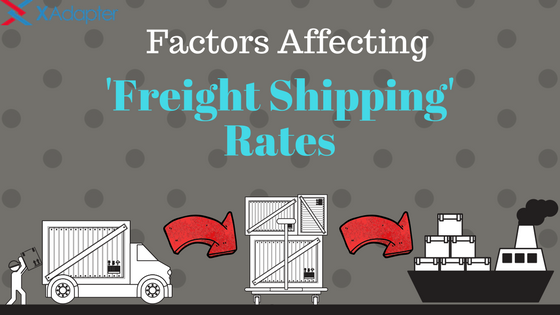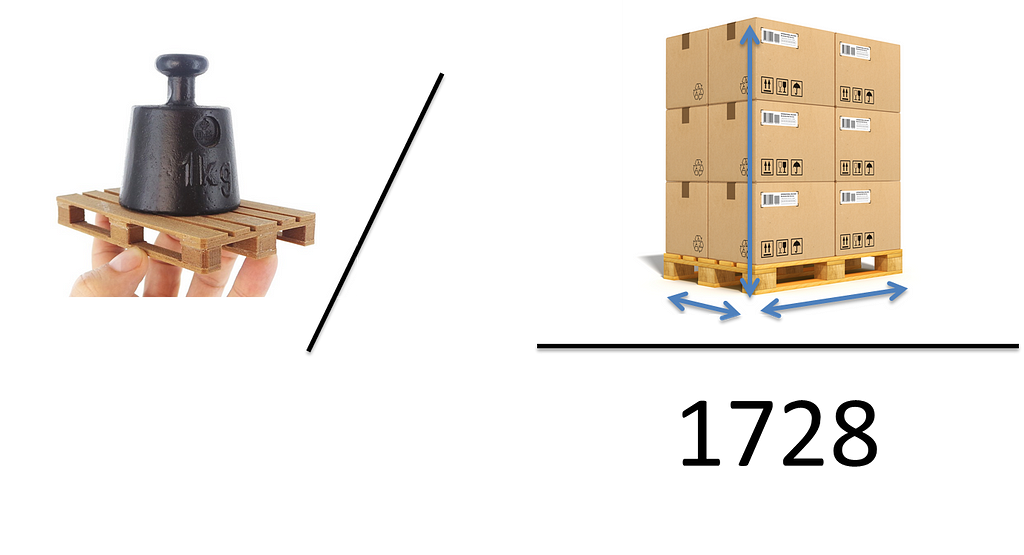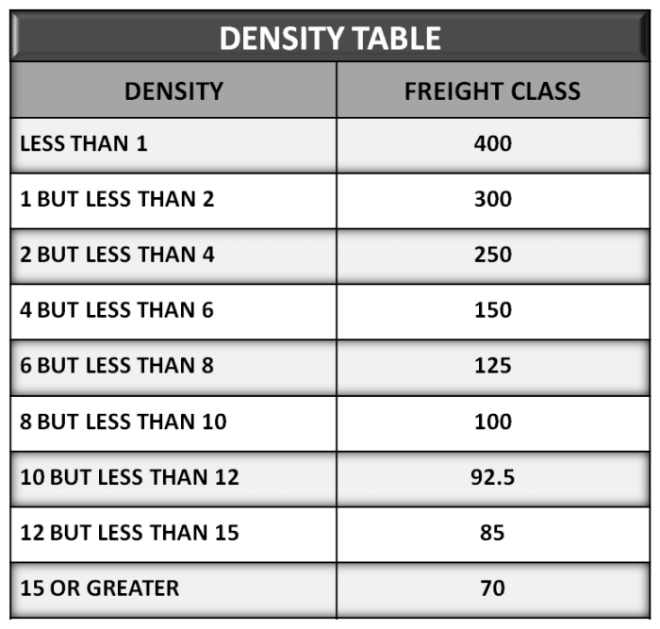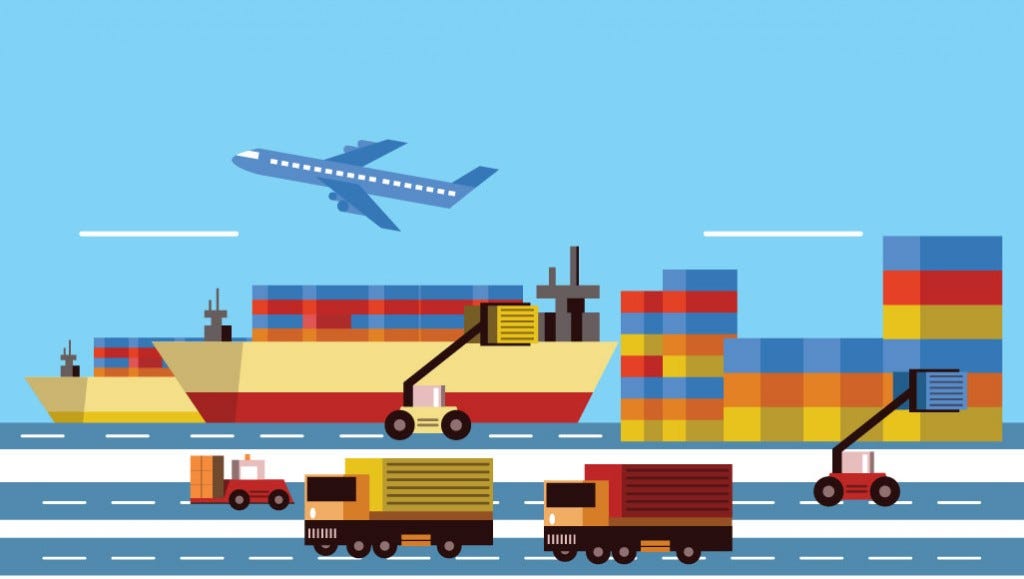Latest news about Bitcoin and all cryptocurrencies. Your daily crypto news habit.

Originally published at www.xadapter.com on February 5, 2018.
While shipping products across the globe it is very common to commit mistakes. Sometimes you may miscalculate package weight or even the shipping carrier you have chosen may not be the best suited for the job. These small mistakes may cost a little while shipping common products. But this is not the case with Freight. While shipping normal products may or may not be a risky job, but when it comes to freight shipping, things need to be perfect. With bigger shipments, even the things like shipping carriers, shipping service, and even the mode of transportation can cause serious trouble.
In this article, we will cover some important factors that you need to keep in mind while going through freight shipping. This way these factors will help you take better decisions when it comes to the shipping rates. But before that, let’s take a look at freight shipping and how exactly is it different from normal shipments.
Freight Shipping
Freight shipping comprises of transporting cargo, goods, and commodities by the means of air, land or water transport. In other words, freight can be defined as the goods shipped by truck, train, ships or planes. Freight shipping is mostly carried out using trucks, railroad cars and large ships that can carry huge containers.
How is Freight shipping different from normal shipping..?
Normally parcel shipping is associated with the products that are smaller in size and quantity. In most of the cases, the shipments are allowed to contain products weighing up to 150 lbs. But this is not the case with freight. Freight shipping involves shipments that weigh more than 150 lbs.
Apart from the weight differences, there are also other things that vary in freight shipping. These include,
- Classification of Freight productsFreight shipments are considered to help avoid the shipping rates confusion among consumers and carriers. It is a standardised method which has helped to generate a uniform pricing structure for freight shipping. There are about 18 different freight classes based on the package weight, density, and value. The freight class number lies between 50 and 500. You can get more information on freight classes in this link.
- Modes of shipmentThere are various modes of freight shipment. They include,
- Full TruckloadSupports shipment weight above 15000 lbs.
- Less than Truckload (LTL) Supports shipment weight ranging from 150–15000 lbs.
- Partial TruckloadSupports splitting the cost of a truck with other shippers, suitable for shipment weight above 5000 lbs.
- IntermodalIncluding multiple modes of transportation for a single shipment.
- Expedited Freight Faster, but costlier freight shipping mode.
Factors affecting Freight Shipping Rates
Below are some of the factors that affect shipping rates when it comes to freight shipping.
- Weight of the shipment
- Density of the shipment
- Distance between source and destination
- Freight Classification
- Shipping Mode
- Fuel Cost
- Tariff rates and Negotiated Rates
Now we will be discussing each factor in detail as for how each one of them affects the cost of freight shipment.
Weight of the shipment
Be it standard shipping or freight shipping, the weight of the shipment is among the most important factors affecting the shipping rates. But in case of the freight shipping, there seems to be a slight change in the way weight affects shipping rates. Freight rates tend to be cheaper when it comes to shipping price per 100 lbs. The reason behind this is that the pre-defined freight groups. As the weight of the shipment increases, it tends to move to the next shipment group. Once in the next shipment group, the weight is considered in the lowest weight category in that particular group. Hence, the weight is matched with the corresponding shipping rates of that particular group.
Moreover, there is one more reason the weight of the shipment is among the top factors that affect the shipping rates. Weight, along with the density, helps to identify the freight class. Hence, becoming the deciding factor when it comes to shipping rates.
Density of the shipment
Before we talk about how the density of the shipment affects the shipping rates, first let’s talk about how to calculate the density. Ideally, to calculate the density, you need to divide the total weight of the shipment with the per cubic feet (cu. ft.). However, in case of pallets, use the dimensions of the pallet, total height of the pallet with the carton and the weight of the pallet to calculate the density.
After calculating the density, you can determine the freight class for your packages. This will determine the shipping rates for your shipment. Moreover, the density of the shipment also allows the carriers to pinpoint the space that the shipment will occupy and most importantly, how easy it is to break. This way it will increase the shipping rates for you.
Distance between source and destination
The distance between the source and the destination follows a very simple rule — More the distance more will be the cost of shipping. However, this is not that simple and the shipping rates may vary from place to place. This variation is due to the fact that shipping carriers may or may not cover the exact geographical location. In such cases, one shipping carrier may contact another carrier to complete the shipment. This way the carriers will eliminate the issue of covering shipping address. However, since the difference in the carrier, different source and destination per carrier, and various other factors can affect the shipping rates to a large extent.
In case of a single carrier, the source and destination’s distance from the nearest metro city is taken into consideration. Also, different locations may vary the capacity for shipping and may also increase the shipping rates.
Freight classification
As we discussed in the above sections, the freight class have a huge impact on the freight shipping rates. Freight classes comprise of two extreme points — Low freight classes and high freight classes. Freight classes are defined on the basis of the weight of the shipment, density of the shipment, handling as well as the liability of the shipment. So based on these factors, the freight class on the lower end will have lower shipping rates. It will include the shipments with a higher density that won’t be prone to damage easily. As a result, the products will be easier to handle. On the other hand, the higher freight classes will have products with higher shipping rates. Reason being the lesser density, shipment being too delicate to handle and easily prone to damage.
As a thumb-rule, higher the freight class higher will be the shipping rates.
Shipping Mode
As we discussed various shipping modes, these too affect the shipping rates in case of freight shipping. Shipping modes only affect the time aspect of the shipment. Once you have selected the freight class, the only thing that counts is how urgently you want your shipment to reach the destination. Based on the urgency, shipping mode like Expedited Freight Shipping will result in a faster but costly shipping. This is because of the additional charges that are added when you select a much faster shipping service.
Fuel Cost
It is obvious to say that the shipment cost also depends on the price of the fuel. However, it is not as simple as it seems. Shipping carriers have no way to compensate the increase or even decrease in the fuel charges. Hence, the only feasible option is to pass the difference in the fuel charges over to the consumers. In case, the fuel prices go up, the shipping rates will be higher. This is mainly done by introducing a fuel cost component among the shipping charges. The same thing happens if the fuel charges go down. The shipping carriers may choose to levy off the fuel cost or decrease the amount so that the shipping rates are cheaper but still they manage to make profits.
Tariff rates or Negotiated rates
Working with the shipping carriers is similar in case of the parcel as well as freight shipping. The shipping cost depends on the type of shipping rates you get from the shipping carrier. Hence, based on whether you are going for the tariff rates or opting for the negotiated shipping rates, your shipping cost will vary. In such cases, the best possible option is to approach the third party logistics (3 PL). Shipping carriers generally offer 20–25 % discount as negotiated rates, if the company has been shipping multiple shipments to multiple locations. If not, then opting for the logistics will easily affect the shipping cost in a positive way. This way, they might provide you the price negotiation that you directly won’t be able to get.
So this was some insight about the freight shipping and some of the most important factors affecting the freight shipping rates.
Summary…
This article covers freight shipping rates. In the modern world, with E-commerce flourishing, anything and everything is available online. This has resulted in shipping to be an important field. Especially when the items to be shipped are huge. Freight comprises of shipments with weight above 150 lbs (68 kg). Being heavy, there are some very important factors that make freight a bit different and difficult to ship than normal packages. This article covers some of the important factors that make up freight shipping costs. With the help of this article, you can easily get an idea of how costly or cheap your freight shipments would be.
If you have any queries regarding the content of the article, feel free to share your views in the comment section below. We would be more than happy to help you understand the freight and how is it different from the normal shipping.
Apart from that, you can also use the following WordPress shipping plugins on your WordPress sites, for handling freight shipments.
WooCommerce UPS Shipping plugin with Print Label
- Provides real-time UPS Shipping quote based on package weight and destination address
- Supports Domestic as well as International Shipping.
- Supports Parcel as well as Freight Shipping.
- Allows to Print Shipping Labels and Return Shipping Labels.
- Supports UPS Shipment Tracking from within the store.
- Notification Email to the customers with tracking details and Shipping Labels with it.
WooCommerce FedEx Shipping plugin with Print Label
- Provides real-time FedEx Shipping quote based on package weight and destination address
- Supports Domestic as well as International Shipping.
- Supports Parcel as well as Freight Shipping.
- Allows to Print Shipping Labels and Return Shipping Labels.
- Supports FedEx Shipment Tracking from within the store.
- Notification Email to the customers with tracking details and Shipping Labels with it.
Factors affecting your Freight Shipping Rates was originally published in Hacker Noon on Medium, where people are continuing the conversation by highlighting and responding to this story.
Disclaimer
The views and opinions expressed in this article are solely those of the authors and do not reflect the views of Bitcoin Insider. Every investment and trading move involves risk - this is especially true for cryptocurrencies given their volatility. We strongly advise our readers to conduct their own research when making a decision.








